Everyone can recognize an elephant, but if someone asked, is it an Asian elephant or an African elephant, would you know the difference?
When we talk about "elephant," it is, in fact, the name of three species: the African forest elephant, the African bush elephant, and the Asian elephant.
The African forest elephant is the smallest of the three, only about 2.4 meters in shoulder height, native to humid forests in West Africa and the Congo Basin. Its tusks are straight and point downward, different from the African bush elephant whose tusks are curved and point forward.
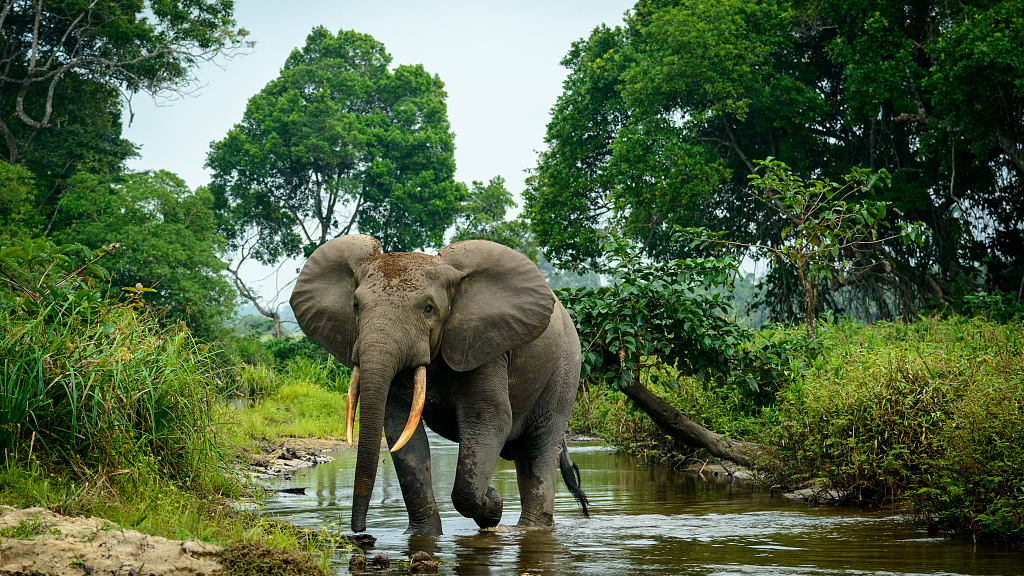
An African forest elephant from Congo. Try to find some differences between the African bush and the forest elephant./VCG Photo
An African forest elephant from Congo. Try to find some differences between the African bush and the forest elephant./VCG Photo
The name "African elephant" usually refers to the African bush elephant, or the African savanna elephant, who roams the grassland of 37 African countries. The Asian elephant, on the other hand, can be found throughout the Indian subcontinent and Southeast Asia.
What are the other differences between the two elephants except for the distribution? Here are some tips:
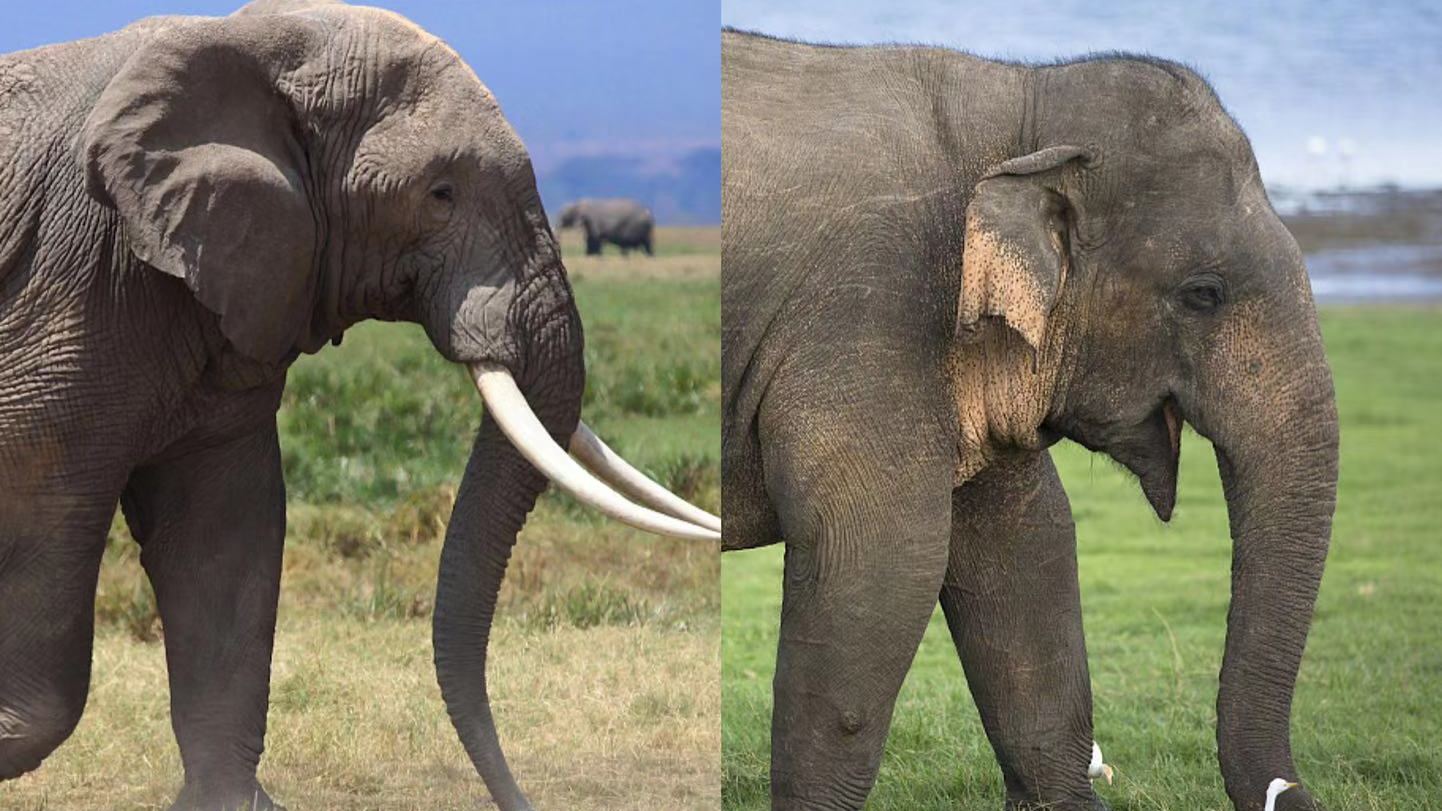
The African elephant vs. the Asian elephant. How many differences can you find based on this picture? /VCG Photo
The African elephant vs. the Asian elephant. How many differences can you find based on this picture? /VCG Photo
The African elephant is generally bigger. As the largest and heaviest land mammal on earth, the male African elephant is about 3.2 meters tall, weighing six tons on average. The largest specimen can reach a shoulder height of 3.96 meters. The Asian elephant is smaller in size. Males are about 2.75 meters tall, weighing four tons.
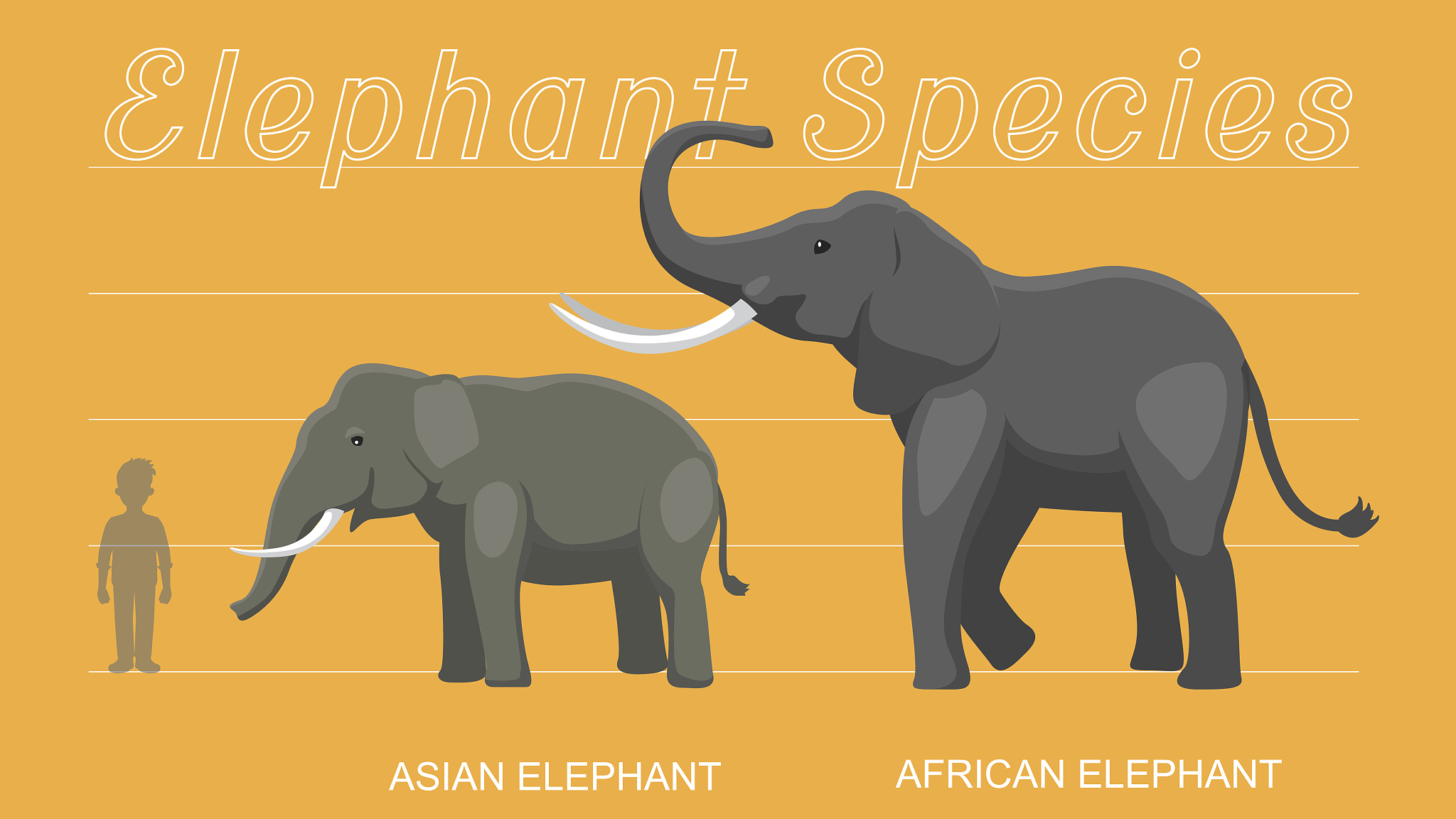
Comparing heights. /VCG Photo
Comparing heights. /VCG Photo
You can tell an African elephant apart from an Asian elephant by observing closely their body structures. The two species have different body and head shapes. The African elephant's back is concave, while the Asian elephant's back is convex. Besides, they have different ear shapes. The African elephant has much larger ears similar to the African continent, while the Asian elephant has smaller, rounder ears.
Slide to see differences.
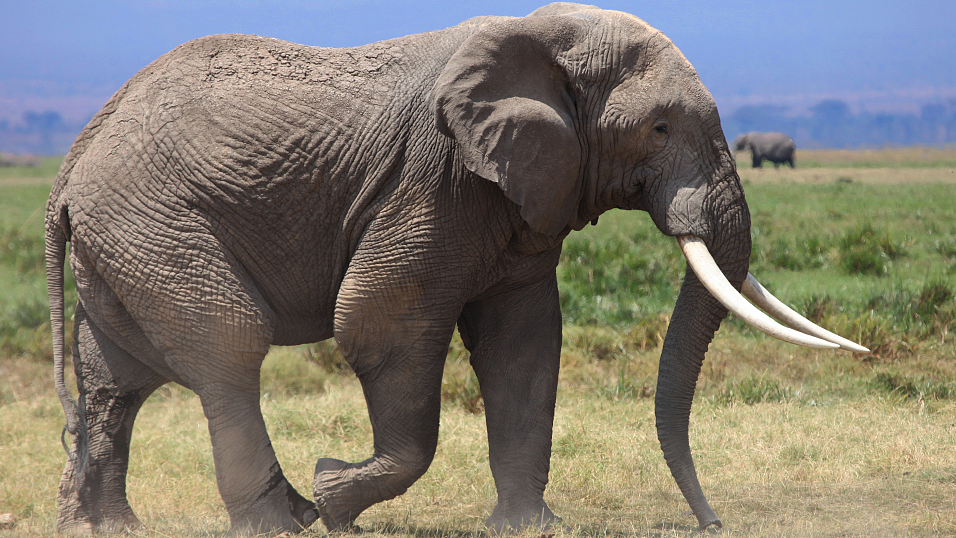
The African elephant: concave back, "African continent shaped" ears, both genders have tusks. /VCG Photo
The African elephant: concave back, "African continent shaped" ears, both genders have tusks. /VCG Photo
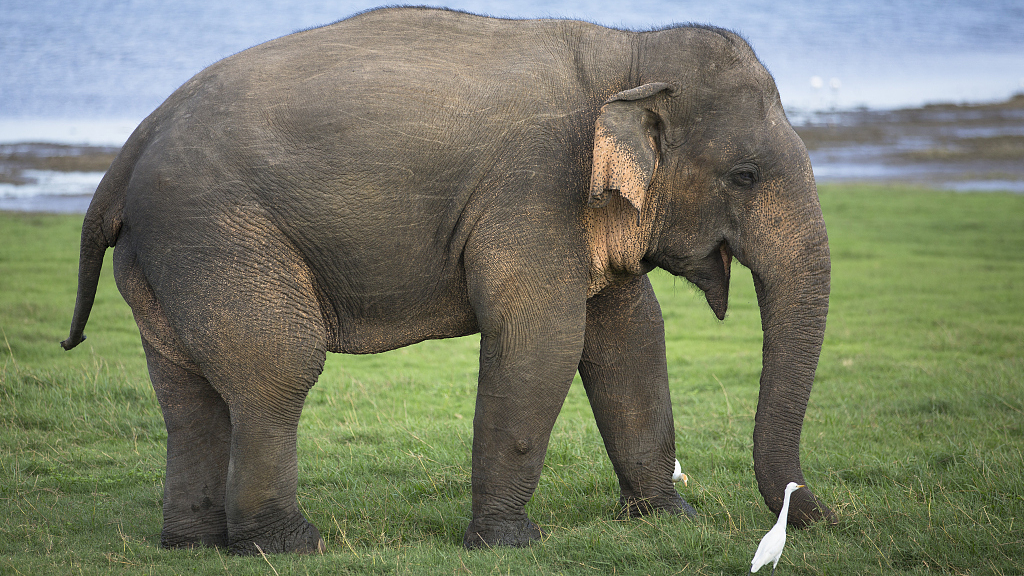
The Asian elephant: convex back, small round ears, the female doesn't have tusks. /VCG Photo
The Asian elephant: convex back, small round ears, the female doesn't have tusks. /VCG Photo
Both male and female African elephants have tusks. The magnificent tusks can be very long and quite spectacular. The longest known tusk of an African bush elephant measured 3.51 meters and weighed 117 kg. On the other hand, only male Asian elephants have tusks, and they are called "tuskers." The tuskers are much shorter and lighter than those from their African cousins.
Slide to see differences.
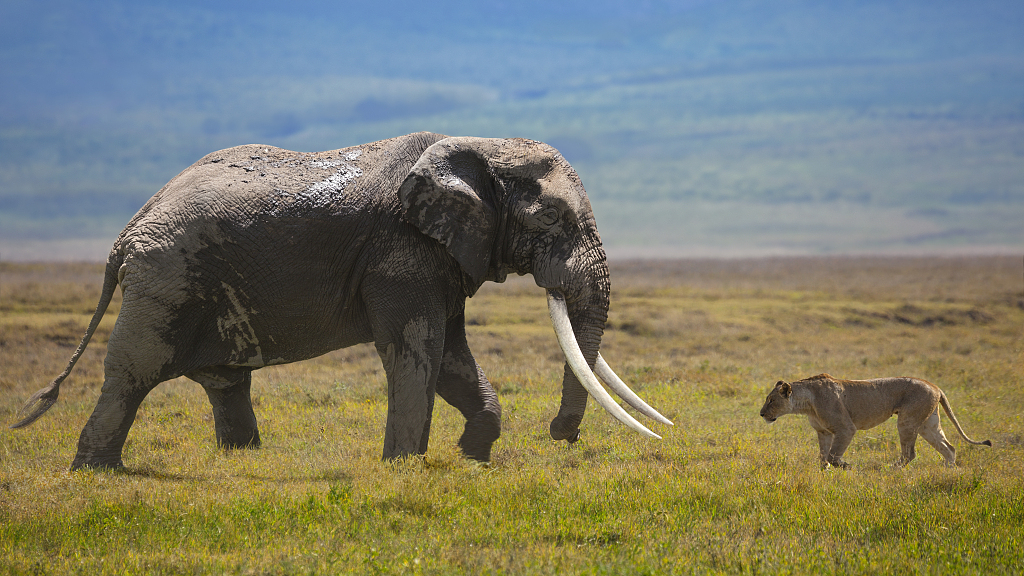
The African elephant's tusks can be quite long. /VCG Photo
The African elephant's tusks can be quite long. /VCG Photo
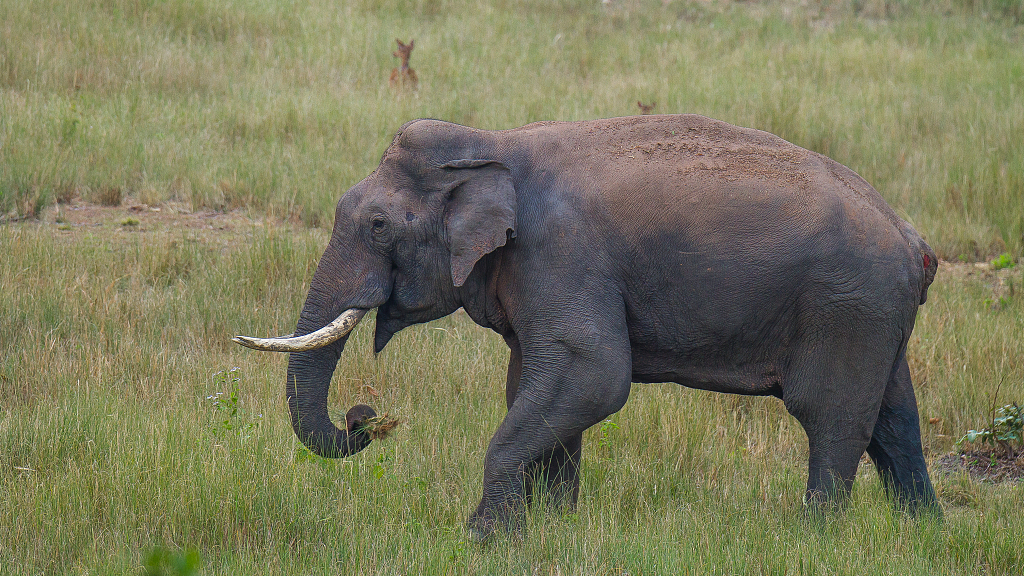
The Asian elephant's tusks are generally smaller. /VCG Photo
The Asian elephant's tusks are generally smaller. /VCG Photo
If you have the opportunity, take a close look at the trunk tip of an elephant.
The African elephant's trunk has two finger-like processes on the tip, while the Asian elephant's trunk only has one "finger." For both elephants, the trunk is the most important and most useful tool in their lives.
An elephant's trunk has up to 60,000 muscles, can complete many complicated actions, and is so strong that can lift a weight as heavy as three percent of the elephant's body weight.
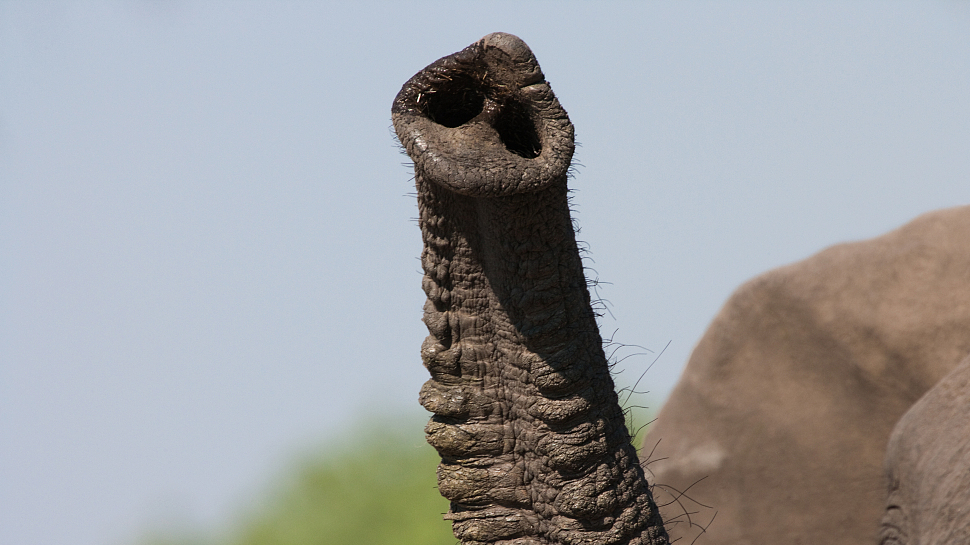
The African elephant's trunk tip has two "fingers." /VCG Photo
The African elephant's trunk tip has two "fingers." /VCG Photo
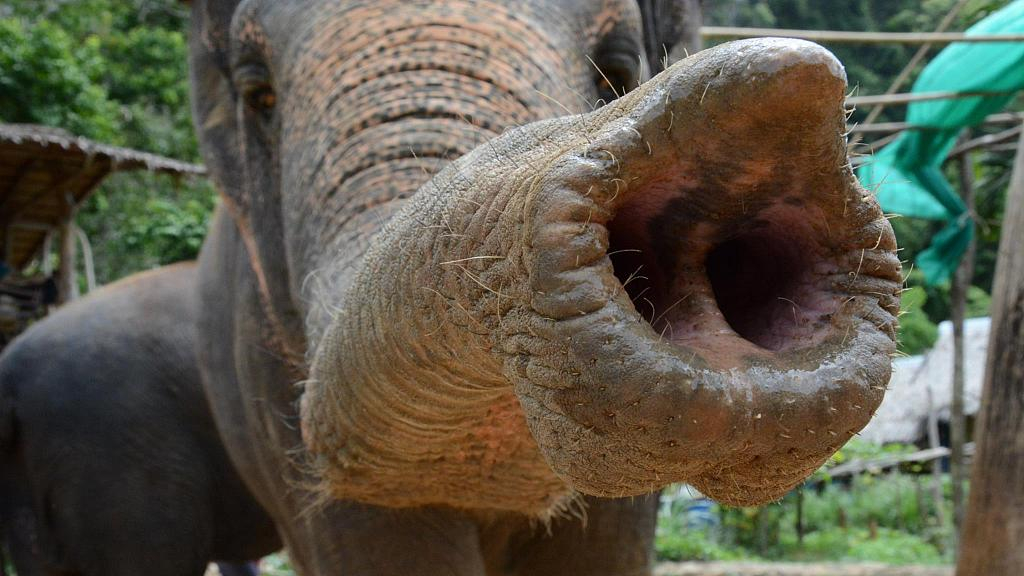
The Asian elephant's trunk tip has only one "finger." /VCG Photo
The Asian elephant's trunk tip has only one "finger." /VCG Photo
Both African and Asian elephants are threatened by poaching and habitat loss.
The Asian elephant faces a more unfavorable situation. It is evaluated as "endangered" by IUCN red list, with a decreasing population of 50,000 to 40,000. According to the World Wildlife Fund, there are now thought to be around 415,000 African elephants left in the wild. But they are still listed as "vulnerable" by IUCN because they are seriously threatened by illegal ivory trade.
(Cover image via VCG, designed by CGTN's Jia Jieqiong)
(If you want to contribute and have specific expertise, please contact us at nature@cgtn.com.)